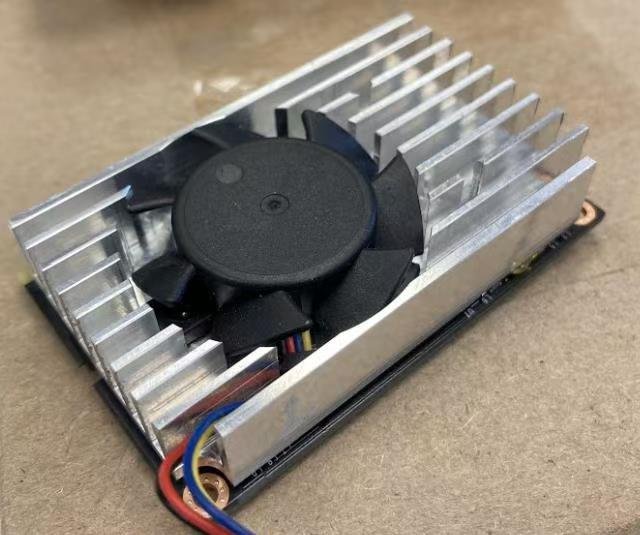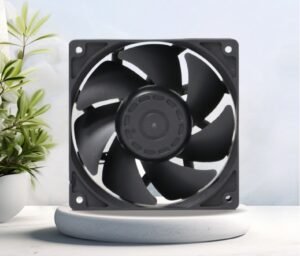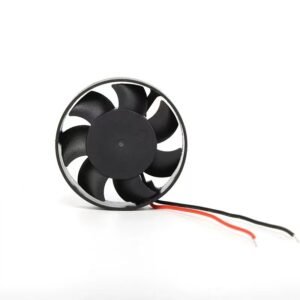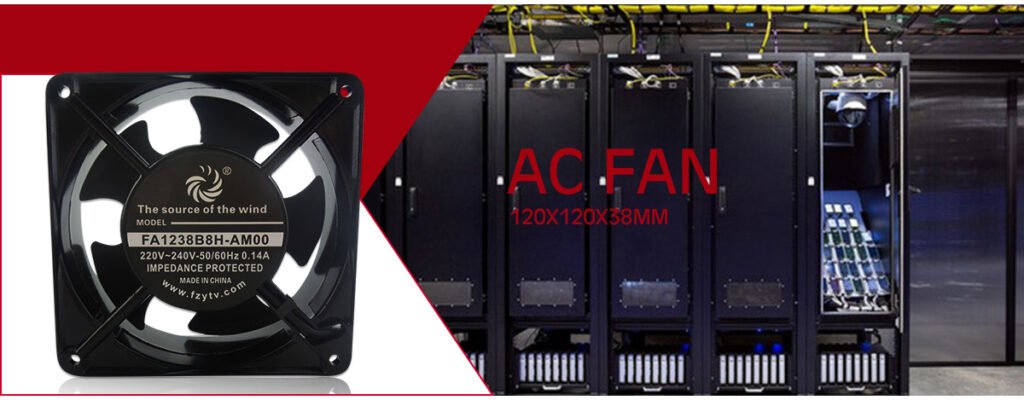Having been in the cooling fan industry for over 20 years, I have seen all sorts of challenging thermal demands at Mega Tech. Every now and then, a case comes along that makes you scratch your head and think, “How is this even possible?” Today, I want to share one such story about a bold startup designing a cutting-edge lens with a cooling space so tiny it’s almost absurd. You know how it goes—modern hardware engineers are always trying to cram more features into smaller spaces. That’s not a bad thing; it’s innovation! But for those of us in the cooling business, it means the challenges just keep getting tougher.
This client’s product was a classic example: high performance, highly integrated, but the space left for the cooling fan? A mere “crack” less than 40mm in diameter and 10mm in height.
“Standard Parts? They Don’t Cut It Here”
The client initially tried off-the-shelf standard fans. The results? Either they didn’t fit, underperformed, or sounded like a tractor. They quickly realized this wasn’t a simple fix—they didn’t just need a parts supplier; they needed a partner who could understand their predicament and work together to find a solution. That’s where Mega Tech came in.
Many clients, especially those used to “big-name” fans, often ask, “Are Mega Tech’s fans up to the task?” It’s a fair question. Big brands have the reputation and the hefty price tags to match. But here’s the thing: Mega Tech has thrived in this industry for over 20 years by delivering high-performance, cost-effective, and reliable cooling solutions. Many clients, after trying our products, are pleasantly surprised to find that our fans match the performance of big brands while significantly cutting costs—a real boost to their product’s market competitiveness.
More Than Just Selling Fans—We Tackle Problems with You
When we took on this lens cooling project, we knew right away it wasn’t about picking a model from a catalog. We sat down with the client, listened carefully to their needs: the lens’s internal structure, target heat dissipation, desired airflow paths, and even strict noise requirements. After internal discussions, we proposed two options:
- A standard 4010 (40mm x 10mm) axial bracket fan: The most straightforward option, just barely fitting the space.
- A custom 4010 bracket fan with blower-style blades: Given the tight space, we thought this blade design might offer unique airflow characteristics and pressure.
The client tested both options on their prototype. The standard 4010 axial bracket fan turned out to be the better fit for their application, offering a balanced performance.
The “Mysticism” of RPM: Finding That “Just Right” Point
With the fan model settled, a new challenge emerged: RPM. The client knew they needed to adjust the fan speed based on the lens’s real-time temperature, but they weren’t sure which speed range was optimal. It’s like debugging code—you know there’s an ideal solution, but how do you find it?
This is where Mega Tech’s value as “not just a manufacturer, but a solutions partner” shines. We didn’t just hand the client a fan and say, “Figure it out.” Instead, we guided them step-by-step to find the best operating parameters. We offered two approaches:
- If you’re familiar with PWM (Pulse Width Modulation) speed control: Start with the fan’s maximum RPM (in this case, we set a 6000 RPM ceiling for safety). Then, adjust the duty cycle via PWM signals, gradually lowering the speed while closely monitoring the lens temperature and system performance. This helps pinpoint the “golden RPM” that balances cooling, noise, and power consumption. Don’t forget to note the current and actual RPM—valuable data.
- If you’re not familiar with PWM or have a target RPM in mind but want to validate it: No problem, we’ll try voltage tuning. Gradually reduce the voltage supplied to the fan, which lowers the speed and airflow. When the cooling performance meets your expectations, record the voltage and corresponding RPM. With this data, Mega Tech can customize a fan that hits your “ideal RPM” at your system’s rated voltage.
Precision Control for Exceptional Products
This hands-on collaboration paid off quickly. The client opted for the PWM speed control solution, setting the fan’s maximum RPM at 6000. This gave them tremendous flexibility to create a smart cooling strategy:
- Temperature threshold triggering: The fan only kicks in when the lens reaches a certain temperature.
- Dynamic RPM curve: At low temperatures, the fan runs quietly at low speed; when temperatures spike, it ramps up to cool things down quickly.
This level of precise control can be fine-tuned in software for specific use cases, significantly enhancing the performance and user experience of their high-end lens.
From Tough Challenge to Successful Funding: A Shared Victory
By working shoulder-to-shoulder with the client, deeply understanding their pain points, and providing tailored guidance, Mega Tech helped them overcome this critical design bottleneck. The customized 4010 cooling solution performed flawlessly in their product, allowing their innovative lens to reach its full potential. Even more exciting, shortly after finalizing the product, we heard the client secured significant funding—a testament to both their product’s innovation and the reliability of our cooling solution.
At Mega Tech, we believe our role goes beyond manufacturing and selling fans. We’re engineers, problem-solvers, and partners in your innovation journey. Just as we helped this lens company, we’re committed to understanding your vision and providing not just components, but complete solutions that drive your success. We don’t just make fans; we create the future with you.
Is your next project facing a cooling “roadblock”? Don’t hesitate—talk to Mega Tech. We’re ready to help you find that “cool” solution.
Articles you may also like:
Why Mega Fan is the best alternative to EBM Papst fan
Redefining Automotive Seat Ventilation with Mega Tech’s Blower Fans
The Ultimate Guide to the Best 12V DC Axial Fan for Air Filtration in 2025
MG9720H12B: Custom Car Seat Cooling by MEGA
Mega Tech Cooling Fans: The 2025 Efficiency Guide









